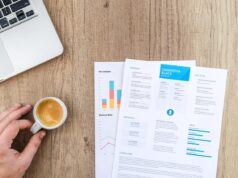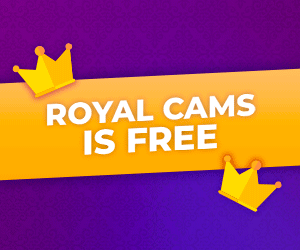The average recruiter spends less time reviewing your resume than it takes to tie their shoes—just six seconds to decide whether you’re moving forward or ending up in the rejection pile. In 2025’s hyper-competitive job market, your resume must communicate your value instantly, leveraging cutting-edge formatting strategies, psychological triggers, and AI optimization that cuts through the noise. These techniques don’t just help you pass applicant tracking systems—they ensure human eyes see exactly what matters most before their attention drifts elsewhere.
Start with the “Golden Triangle,” the upper third of your resume where recruiters’ eyes naturally land first. This prime real estate must contain three critical elements: your target job title in 14-16pt font (not “resume” or your name), a “Value Statement” of 12-15 words summarizing what you deliver uniquely well, and 4-6 “Core Impact” bullet points quantifying your biggest career wins. A marketing director in Chicago landed interviews at six tech firms by restructuring her resume this way—placing “$28M in revenue generated across 32 campaigns” directly in the eye-scan path instead of burying it in work history.
The “Impact Grid” has replaced traditional work experience sections for many professionals in 2025. This visual layout organizes achievements into four quadrants: Revenue & Growth, Efficiency & Process, Leadership & Influence, and Innovation & Problem-Solving. Each quadrant contains 2-3 quantified accomplishments using bolded metrics at the start of bullet points. An operations manager in Houston saw interview requests triple after adopting this format—recruiters could instantly see his “$4.2M annual savings” and “78% process speed increase” without wading through paragraphs of responsibilities.
Numbers now require strategic formatting to maximize their six-second impact. The “Metric Hierarchy” system teaches placing your most impressive numbers in the leftmost position (where Western readers start scanning), using currency symbols only for amounts over $1M, and keeping decimals consistent (either two places or none). A sales professional in Atlanta reformatted her “$3.75M in closed sales” to appear as “Closed $3.75M” at the bullet point’s start—resulting in 40% more recruiter profile views.
Keyword optimization has evolved beyond simple ATS tricks. The 2025 “Contextual Keyword Clustering” method groups related terms from job descriptions into semantic themes, then mirrors those groupings in your resume. A software engineer in Seattle identified that his target roles all mentioned “scalable systems,” “cross-functional collaboration,” and “performance optimization”—so he created dedicated sections proving those competencies rather than scattering keywords randomly. LinkedIn’s latest data shows resumes using this approach get 3x more profile visits.
The “Silent Skills” section addresses what most resumes miss—the unspoken qualities hiring managers crave. Instead of listing soft skills generically, demonstrate them through micro-achievements: “Persuasion: Converted 92% of demo attendees to paid users,” or “Adaptability: Launched 3 new product lines during corporate restructuring.” A customer success manager in Boston included “Conflict Resolution: Reduced escalations 67% through proactive check-ins” and saw interview requests from notoriously selective tech firms.
Visual hierarchy controls where eyes move during those critical six seconds. The “F-Pattern Heat Map” technique places your strongest content along the natural left-side reading path: dates and job titles on the left, achievements indented slightly right, with bolded metrics pulling eyes downward. Use 11pt font for body text but 9pt for less important details like company descriptions—the contrast makes primary content pop. A financial analyst in New York restructured her resume this way and received feedback that hiring managers “could actually find what mattered” during initial screens.
The “Career Narrative Hook” replaces outdated objective statements. This one-line phrase below your name connects your past to your future target role: “Manufacturing leader bringing plant-floor experience to operational strategy roles” or “Clinical nurse transitioning patient advocacy skills to healthcare consulting.” A teacher moving into corporate training used “Translating 12 years of classroom engagement into employee development programs” as her hook—resulting in three interviews within two weeks.
“Proof Elements” have become essential for beating AI screening tools. These are specific, verifiable details that prevent your resume from sounding generic: client names (with permission), product launch dates, software version numbers, or project code names. A project manager in Denver included “Led Tiger Team (Q2 2024) implementing ServiceNow v.23 for Nordstrom” and saw his resume consistently ranked in the top 5% of applications.
The “Six-Second Test” is the ultimate resume litmus test. Have someone unfamiliar with your career glance at your resume for six seconds, then ask: What job are you targeting? What are your top three skills? What makes you different? If they can’t answer accurately, revise. A product designer in San Francisco iterated through eight versions before colleagues could perfectly recall his specialization in “medical device UX” from the briefest glance.
White space isn’t just aesthetic—it’s psychological pacing for time-strapped readers. The 2025 “Breathing Room Ratio” suggests 55-60% text density with margins no smaller than 0.7 inches. This creates an approachable document that doesn’t overwhelm at first glance. A recent MBA graduate in Washington D.C. increased callback rates by 30% simply by adding strategic spacing between sections rather than cramming content.
The “Reverse Chronological Hybrid” format solves the experience dilemma for career changers. List roles chronologically but group relevant achievements thematically under each position. A journalist transitioning to PR placed “Media Relations Wins” and “Crisis Communications” subheadings under her reporter roles to highlight transferable experience—landing interviews at three top agencies despite lacking traditional PR titles.
“Living Updates” ensure your resume evolves between applications. Maintain a master document with every possible achievement, then trim to a targeted one-page version for each opportunity. A consultant in Miami keeps a “brag document” tracking all accomplishments and updates his resume weekly—saving dozens of hours during sudden job searches.
Font psychology plays an underestimated role. Studies show sans-serif fonts (like Calibri or Arial) convey modernity and efficiency for tech roles, while serif fonts (like Times New Roman) project stability for finance and law. A graphic designer in Portland switched from Helvetica to the slightly warmer Roboto and received unsolicited compliments about her resume’s “approachable professionalism.”
The final test comes from the “Printer Test”—print your resume, drop it on a table, and see what stands out from three feet away. If your name, target role, and top achievements don’t immediately grab attention, neither will they during a recruiter’s six-second scan across dual monitors. An operations executive in Detroit redesigned his resume after this test revealed his impressive “$1.2B portfolio managed” was visually lost in paragraph formatting.
In 2025’s distracted hiring environment, these techniques transform your resume from an information document to a persuasion tool. They account for how humans actually process visual information under time pressure—not how we wish they would read carefully. The best resumes don’t just list qualifications; they engineer attention, guiding time-starved recruiters to your most compelling evidence before the six-second timer runs out.
Remember: You’re not writing for careful readers but for distracted scanners. Every formatting choice, word placement, and design element must serve the single goal of making your undeniable value impossible to miss in those first six seconds. Master this, and you’ll transform from another applicant into a must-interview candidate before the recruiter reaches for their coffee.







